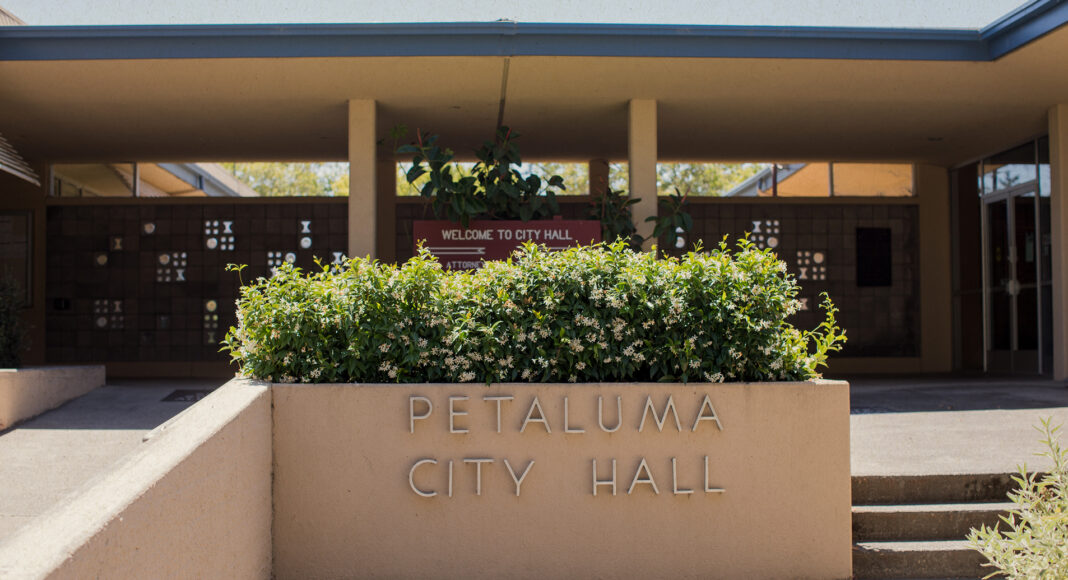The Petaluma City Council recently took a step towards establishing community oversight of the city’s police department during a discussion of recommendations compiled by a community committee during the past year.
The Ad Hoc Community Advisory Committee, originally made up of 28 Petaluma community members, met six times between May and October. Last year, the city hired Tracey Elizabeth Webb Associates, a diversity, equity and inclusion consultant, to facilitate a community listening process, which later led to the formation of the committee. Known as the AHCAC, the group was tasked with preparing recommendations for the City Council to improve race relations and police accountability as part of Petaluma’s reaction to the racial justice protests which swept the nation last summer.
The group’s 31 final recommendations, completed in October, fall into four categories: Police and the Community; Increased Diversity in Schools; Creation of Multicultural Center/Restorative Justice; and Diversity in City Hiring.
At a Dec. 13 meeting, after a presentation by AHCAC-facilitator Webb, the council discussed which recommendations they would like to prioritize, but largely avoided diving into specific actions. Several council members said that creating civilian oversight of the Petaluma Police Department stuck out as a top priority.
The AHCAC recommended that the council “Establish [an] Independent, Adequately Funded, Empowered, Civilian / Community (not city staff) Police Oversight Body.”
At their meeting, the council did not finalize the details of how the oversight body would look, but did agree to hire a consultant to advise the city on the various oversight models. City manager Peggy Flynn estimated that staff would return with more details on police oversight and the AHCAC’s other recommendations in the first quarter of 2022.
“I think the idea of civilian oversight of the police is something that we should adopt. And I think this is an excellent time to do that, because we’re not in a crisis situation. This is the time when we can install a new community group where we are looking at the police as a group that wants to be better,” Mayor Teresa Barrett said during the meeting. Barrett echoed comments from Vice-Mayor Brian Barnacle, that the oversight discussion could also be a time to discuss methods of caring for police officers’ mental health.
Towards the end of the meeting, Petaluma Police Chief Ken Savano responded to the council’s support of increasing oversight with a statement.
“I want to thank Mayor Barrett, for your comments about understanding that support for oversight does not mean that our staff, specifically your police officers and support staff, have been bad… . We do support and understand the importance of oversight to build even more trust and confidence,” Savano said.
Members of the AHCAC seemed to agree that the oversight should not be seen as punishing the department for bad behavior. One of the group’s policing recommendations specifically mentions finding ways to “identify ways to increase dialogue, build relationships, humanize police/community, and embrace restorative justice.”
During a public comment period, AHCAC-member Eric Leland highlighted the same point, saying that the committee favored an oversight process which was “restorative” and “in partnership” between the community and police.
“The whole point [of the AHCAC’s discussions] was that we really need to work together as a community with a strong body of citizens, working together with police to not only daylight some of the problems and see them for what they are, but handle them in a collaborative way,” Leland said.
Last year’s protests reinvigorated calls for increased oversight of local law enforcement agencies, as well as calls to shift some duties and resources from the police departments to other agencies.
Petaluma, Santa Rosa and Rohnert Park have all taken steps towards diverting some emergency calls for mental-health crises away from the police. For their part, Petaluma contracts with the nonprofit Petaluma People Services Center to operate the recently-formed SAFE program.
However, progress on increasing law enforcement oversight in Sonoma County since the nationwide protests has been slower and more limited than many advocates would have liked.
Last November, Sonoma County voters approved Measure P, a ballot item which sought to increase the funding and powers of the county’s Independent Office of Law Enforcement Review and Outreach, an agency tasked with auditing internal reviews completed by the Sonoma County Sheriff’s Office.
More than a year later, the implementation of Measure P has been delayed because of legal challenges by law-enforcement unions. The rollout may be further bogged down in months to come as the county seeks a new director for IOLERO, since the agency’s previous director, Karlene Navarro, was appointed as a judge at the Sonoma County Superior Court last month.
At least one other Sonoma County city is taking steps towards increased law-enforcement oversight.
Last month, the Santa Rosa City Council agreed to hire the OIR Group, a Los Angeles-based firm, to review the police department’s internal reviews and policies. The decision comes nearly three years after the city parted ways with attorney Bob Arronson, who served as the police department’s outside auditor until he criticized Santa Rosa’s handling of homelessness.
In hiring the OIR Group, the council declined to create a community-oversight component, a step which many law enforcement oversight advocates have called for.











